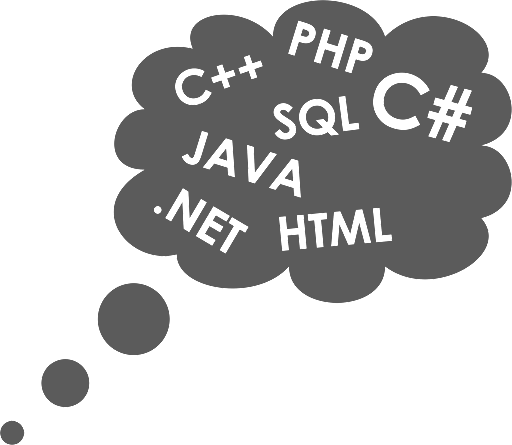Search engine optimization and website development are both very dynamic fields. A technique that worked a few weeks ago may not be so efficient today.
As a web designer, you’re required to keep track of emerging technologies and the latest trends, staying in touch with the demand of the ever-changing industry. This enables you to keep on top of your game and achieve maximum efficiency on any project.
For the purposes of this article, we spoke to our friends from a leading web design agency in NYC. Together with them, we came up with a list of the latest web technologies and explained how each could impact your work.

5 Crucial Web Technologies in 2022
If you’re looking to build SEO-friendly and responsive websites in 2022, you’ll need to be on a first-name basis with all of these technologies, so hopefully, the list will make things a lot easier for you in the future.
Let’s take a look.
1. HTML and CSS
If you’re reading this, you’re probably already familiar with both of these languages, but we still decided to put them on the list for those of you looking to get started on your web development journeys. If this is you, HTML is the one you should start with.
This is the technology that enables web browsers to understand what to display on a page.
Once you have a basic understanding of HTML, you should probably begin learning about CSS as well. Cascading Style Sheets, or CSS for short, is used to fine-tune how HTML elements are displayed.
This all may sound very complex, but there are many free and paid online tutorials that can help you create image hover effects, page transitions, and CSS text effects in no time.
2. Web Development Frameworks
Developers can use web development frameworks to get right to work, avoiding the mundane and simple tasks required by every project. We have outlined the most popular, and in our opinion, highest-quality frameworks below.
Angular
Angular was explicitly designed for developing dynamic web applications, and it is one of the most recent web technologies created for this purpose. With it, you can build front-end apps without the need to include any other plugins or frameworks.
The features of Angular include code-splitting, code generation, MVC architecture, well-made templates, etc. None of the expressions use conditional statements or loops. Instead, they use code snippets enclosed within curly brackets.
Google’s web development expert Justin Schwartzenberger has a 3-hour course designed for those who would like to give Angular a try and see whether this framework would be the right fit for their projects.
The course covers all you need to know to start using the framework, including basic architecture, working with data binding, components, routing, DOM, and more advanced concepts like pipes and directives.
Django
One of the most popular Python frameworks, Django, uses MVC architecture and utilizes its simplicity to make the app development process much more straightforward.
Django simplifies Python greatly, providing a multitude of tools and resources that make the life of a web developer easier, including templates, models, etc.
Laravel
Another excellent development platform for small websites comes in the form of Laravel. Based on PHP, it takes advantage of a wide range of helpful features, including database migration, object-oriented libraries, MVC support, etc.
It also has a fantastic community, with plenty of community-developed and community-supported frameworks. Given that PHP is one of the most popular programming languages, Laravel is the perfect choice for building and maintaining both large-scale B2B web apps and small business websites.
This video course from veteran software developer Bernardo Pineda will get you started with Laravel in less than 3 hours.
Zend
This is another open-source PHP-based framework focused on reliability and security in web services and apps. It was created before the current industry leaders such as Symfony and Laravel and is one of the first MVC frameworks out there. In fact, the popular PHP engine Magento was built in Zend, along with many others.
Today, Zend is still actively developed and remains a phenomenal solution for large-scale PHP apps, even if it is less popular than its younger siblings.
This short video course compares the different PHP MVC frameworks, so check it out if you’re looking for more in-depth coverage of their features.
Meteor JS
Written in Node.js, Meteor makes it possible for developers to build real-time web apps for different platforms. It stands out as the framework for creating simple websites such as personal blogs and sites for small brick-and-mortar businesses.
The average webpage loading time on this platform is significantly shortened thanks to its open-source isomorphic nature. The JavaScript stack also enables developers to achieve the same results with fewer lines of code, which improves efficiency and performance.
Express.js
This framework was also developed in Node.js, and it represents a web application development network perfect for everyone who needs to build APIs and apps as quickly as possible. There are lots of great features included, and many more provided with the help of various plugins.
If you’re interested in learning how Express.js can be used for more advanced web development, check out this course. It shows how the framework can be combined with Mongoose and MongoDB to deploy and maintain an Express app.
3. Programming Languages

Since computers are still mostly incapable of understanding human language, despite the many advances in that area in recent years, we need a way to communicate that suits them. Some of the most popular programming languages used in web development include the following:
- JavaScript — used by a wide variety of frameworks, including Meteor and React, as well as all web browsers
- Python — used in most mathematical and statistical calculations, and by the Django framework
- PHP — used by WordPress and other drag and drop WYSIWYG editors, as well as huge websites like Wikipedia and Facebook
- Java — used by many desktop applications and Android devices
- CoffeeScript — a more straightforward JavaScript “dialect” that converts back into JavaScript.
All that being said, JavaScript has been the most popular programming language for the past nine years, with 64.96% of respondents to the Stack Overflow Developer Survey claiming to use it.
JavaScript will remain a core web technology for a long time yet, so you should never stop building your knowledge of it.
For those of you just starting out, make sure to cover the basics, including interacting with DOM and working with objects and functions. The language evolves very quickly, so you’ll have to constantly stay on top of it if you want to take advantage of its latest “perks.”
4. Protocols
You can think of protocols as instructions on passing information between different devices. We’ll discuss the three most important ones briefly.
HTTP
This is the protocol that enables websites to reach your computer or mobile browser. The browser uses the HyperText Transfer Protocol to request a website from their server, which in turn delivers the site in HTML, CSS, and (potentially) JavaScript form.
DDP
The DDP protocol creates a consistent connection between the server and the client using WebSockets. If you need to build a website that updates in real-time without the user having to refresh their browser, this is the way to go.
REST
REST uses standard methods like GET, POST, and PUT to enable the exchange of information between applications. It is used chiefly for application programming interfaces (APIs).
An API allows other developers to use certain app functionalities without sharing its entire code.
5. Data Formats
Data formats are structures we use to store data. There are three you should familiarize yourself with if you’re planning to build websites in 2022. They are the following:
- XML — the most popular data format for many years. It is used predominantly by Microsoft systems.
- JSON — short for JavaScript Object Notation. This format is used for both exchanging and storing data, just like XML. It has been the most popular data format for the past couple of years.
- CSV — used for Excel data and other data formatted by commas.
Closing Thoughts
If you want to stay up to date with the latest SEO tools and web development technologies, you need to keep learning. These technologies are updated and improved constantly, and every web developer and web development team should make an effort to take advantage of these changes whenever possible.
Sometimes it can be hard to grasp new technologies, as they can introduce considerable differences to the entire development process.
Thankfully, there are many online tutorials out there to help you understand everything to the tiniest detail. Alternatively, you can always outsource a portion of your efforts to a more experienced team or hire them for consultation purposes.
